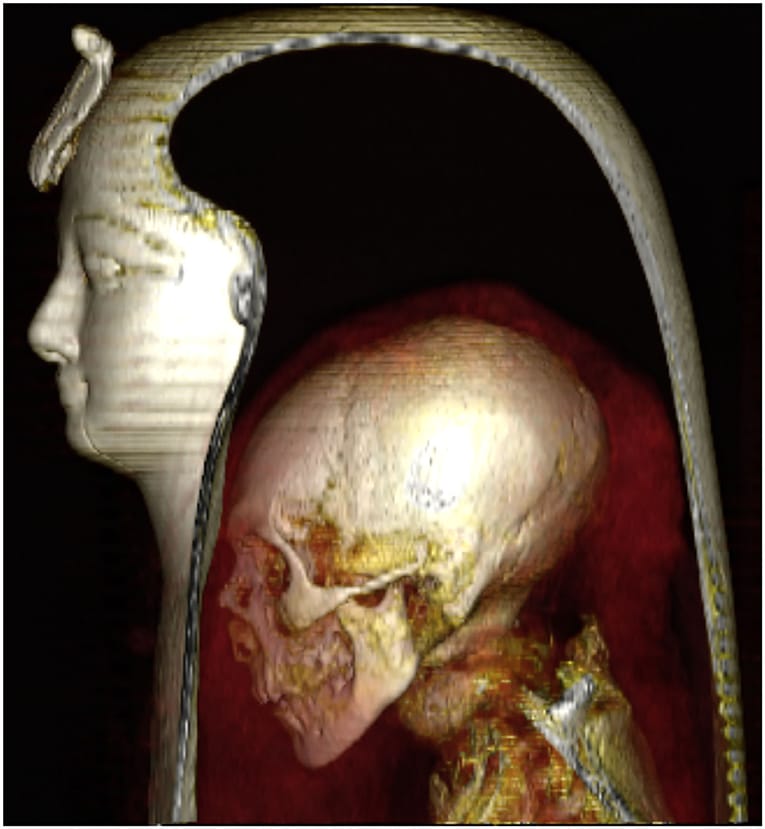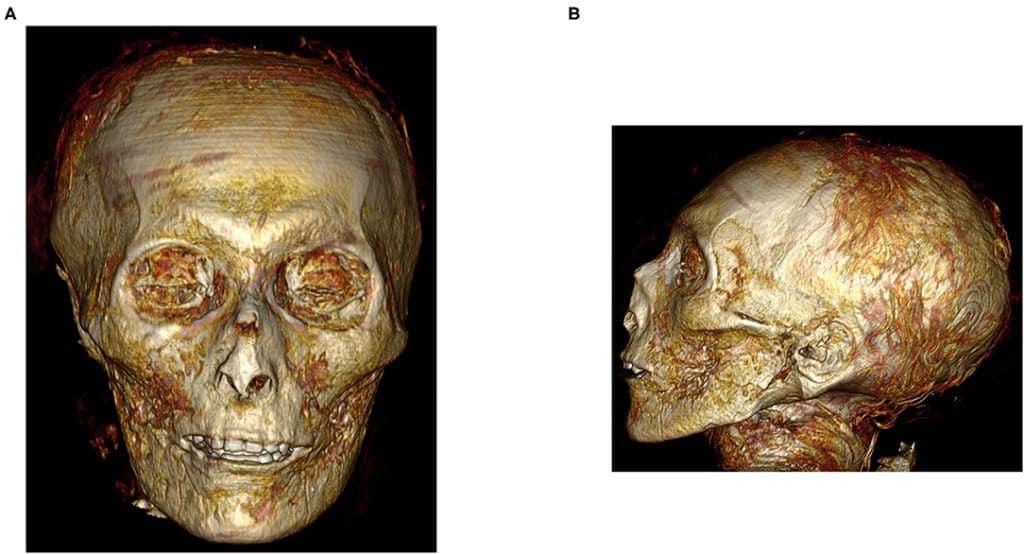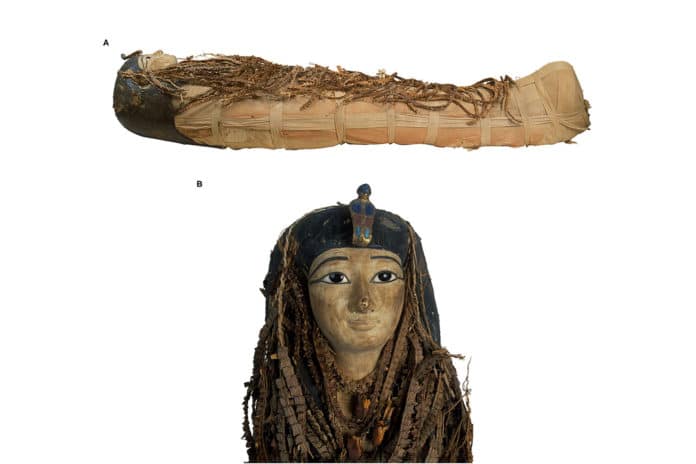Amenhotep I ruled Egypt for about 21 years (c.1525–1504 BC). He was the second king of the 18th Dynasty to ascend the throne after his father’s death, Ahmose I. Amenhotep I may have co-reigned with his mother, Ahmose-Nefertari. The name Amenhotep means: “Amun is satisfied.” His throne name was Djeserkare: “Holy is the Soul of Re.” During his reign, Amenhotep I protected the territories of Egypt; he led a campaign to Kush and an expedition to Libya. Amenhotep I had a peaceful reign that enabled him to focus on temples’ administrative organization and commission building work.
In 1902, the Royal mummies, including that of Amenhotep I, were moved to the Egyptian Museum at Tahrir in Cairo. The mummy of Amenhotep I was one of the very few royal mummies that have not been unwrapped by modern Egyptologists. Gaston Maspero, the director of antiquities in Egypt at that time, decided to let the mummy remain untouched because of its perfect wrapping, completely covered by garlands and its exquisite face mask. When the coffin of Amenhotep I was opened, a preserved wasp was found, possibly attracted by the smell of garlands, and was trapped.
Now for the first time, scientists from Egypt have used three-dimensional CT (computed tomography) scanning to ‘digitally unwrap’ this royal mummy and study its contents. They report their findings in Frontiers in Medicine.

This was the first time that Amenhotep’s mummy had been discovered in three millennia. The previous time was in the 11th century BCE, more than four centuries after his original mummification and burial.
Hieroglyphics have described how, during the later 21st Dynasty, priests restored and reburied royal mummies from more ancient dynasties, to repair the damage done by grave robbers.
“This fact that Amenhotep I’s mummy had never been unwrapped in modern times gave us a unique opportunity: not just to study how he had originally been mummified and buried, but also how he had been treated and reburied twice, centuries after his death, by High Priests of Amun,” said Dr. Sahar Saleem, professor of radiology at the Faculty of Medicine at Cairo University and the radiologist of the Egyptian Mummy Project, the study’s first author.
“The 3D model of the wrapped mummy allowed the visualization of its different component layers: the head mask, the wrapping bandages, and the mummy. The digital unwrapping of the mummy by peeling off virtual layers exposed the exterior and interior of the mummy and allowed us to study it in detail.” Study quotes.
“By digitally unwrapping of the mummy and ‘peeling off’ its virtual layers – the facemask, the bandages, and the mummy itself – we could study this well-preserved pharaoh in unprecedented detail,” said Saleem.
“We show that Amenhotep I was approximately 35 years old when he died. He was approximately 169cm tall, circumcized, and had good teeth. Within his wrappings, he wore 30 amulets and a unique golden girdle with gold beads.”
“Amenhotep I seems to have physically resembled his father: he had a narrow chin, a small narrow nose, curly hair, and mildly protruding upper teeth.”

Saleem continued: “We couldn’t find any wounds or disfigurement due to disease to justify the cause of death, except numerous mutiliations post mortem, presumably by grave robbers after his first burial. His entrails had been removed by the first mummifiers, but not his brain or heart.”
“We show that at least for Amenhotep I, the priests of the 21st dynasty lovingly repaired the injuries inflicted by the tomb robbers, restored his mummy to its former glory, and preserved the magnificent jewelry and amulets in place,” said Saleem.
Hawass and Saleem studied more than 40 royal mummies of the New Kingdom in the Egyptian Antiquity Ministry Project that was launched since 2005. Twenty-two royal mummies, including that of Amenhotep I, were transferred in April 2021 to a new museum in Cairo. The face of the mummy of Amenhotep I with its mask was the icon of the spectactular ‘Royal Golden Mummy Parade’ on March 3rd, 2021 in Cairo.
“We show that CT imaging can be profitably used in anthropological and archeological studies on mummies, including those from other civilizations, for example Peru,” concluded Saleem and Hawass.
Journal Reference
- Sahar N. Saleem and Zahi Hawass; Digital Unwrapping of the Mummy of King Amenhotep I (1525–1504 BC) Using CT; Front. Med., 28 December 2021 | DOI: 10.3389/fmed.2021.778498
